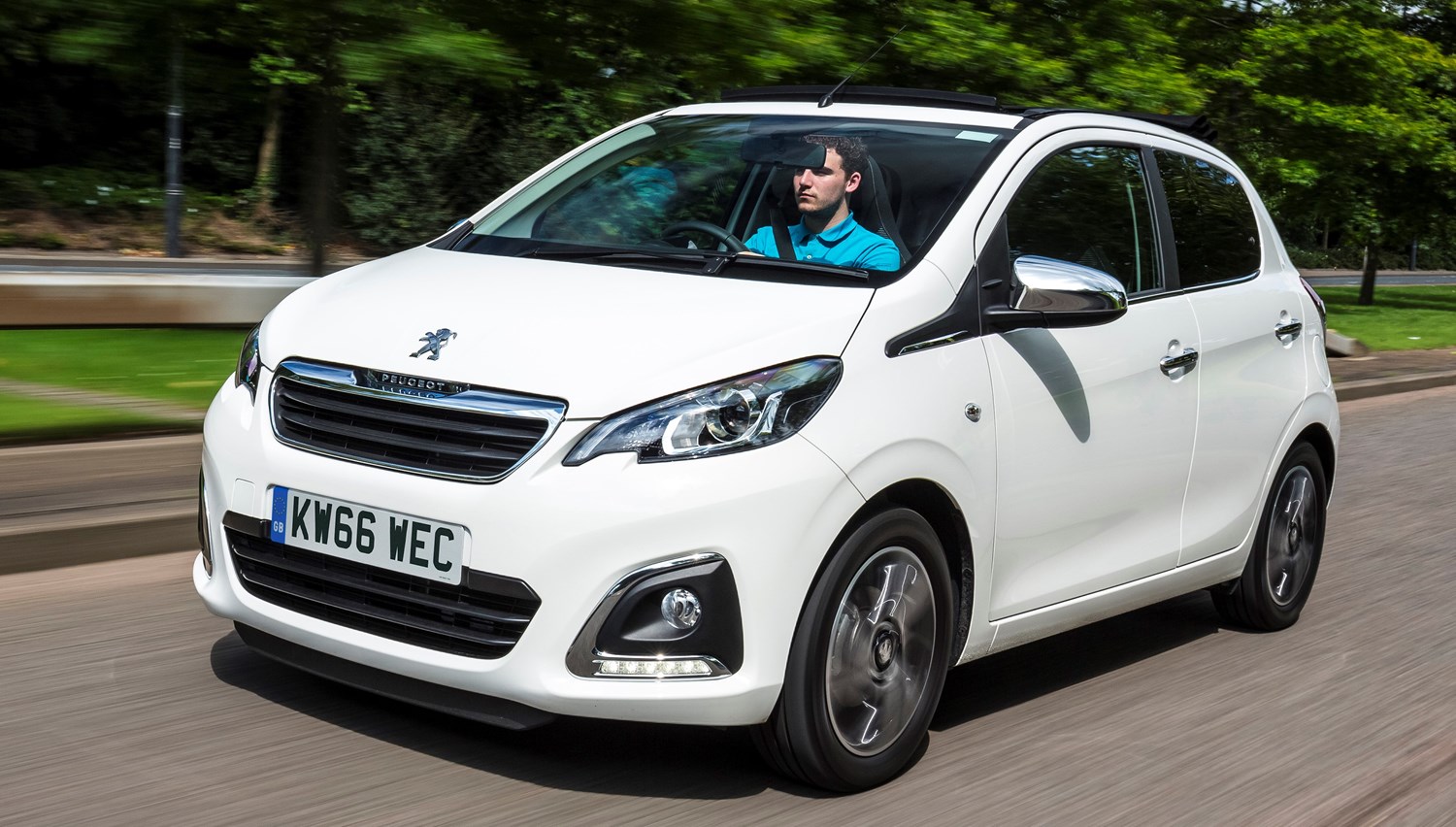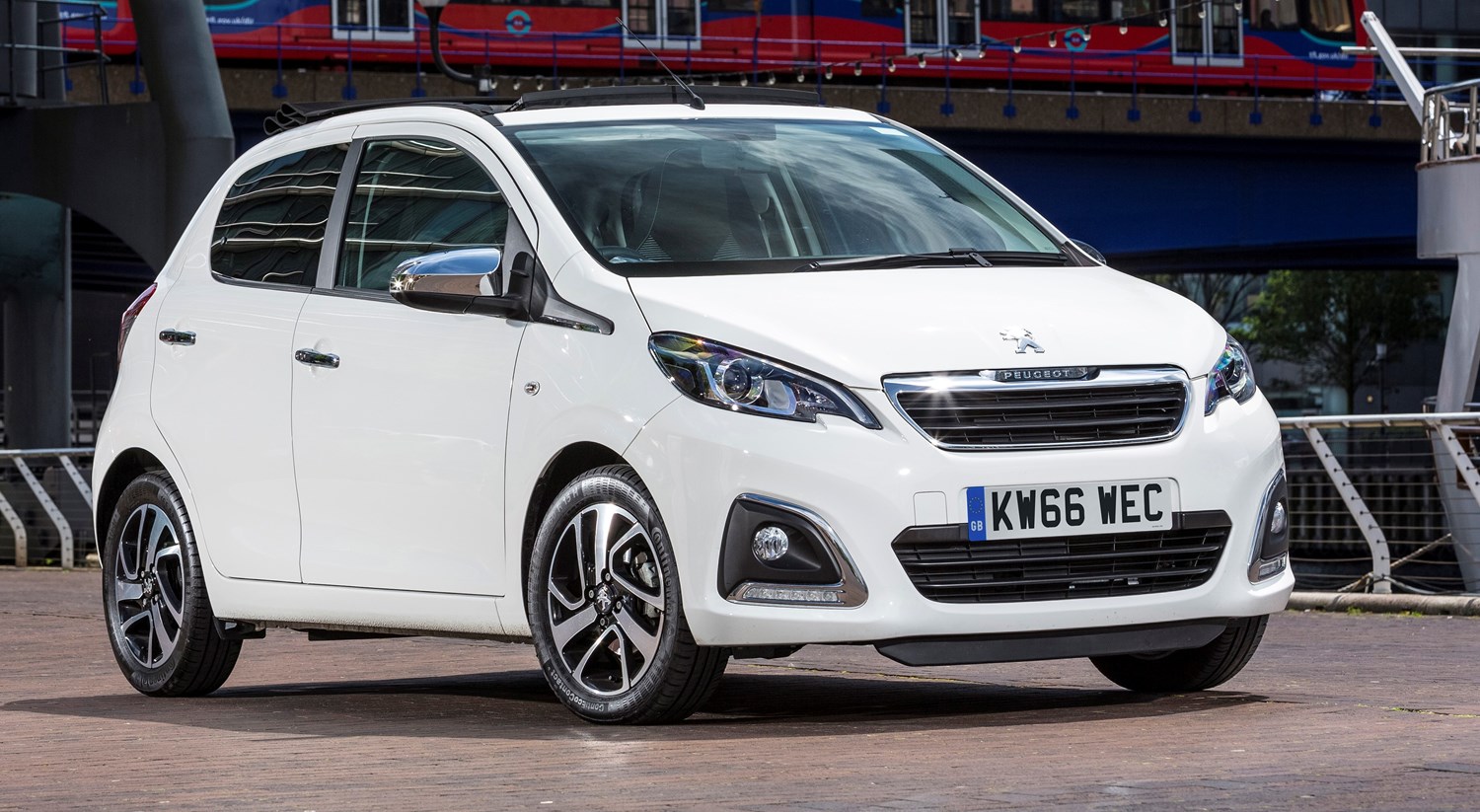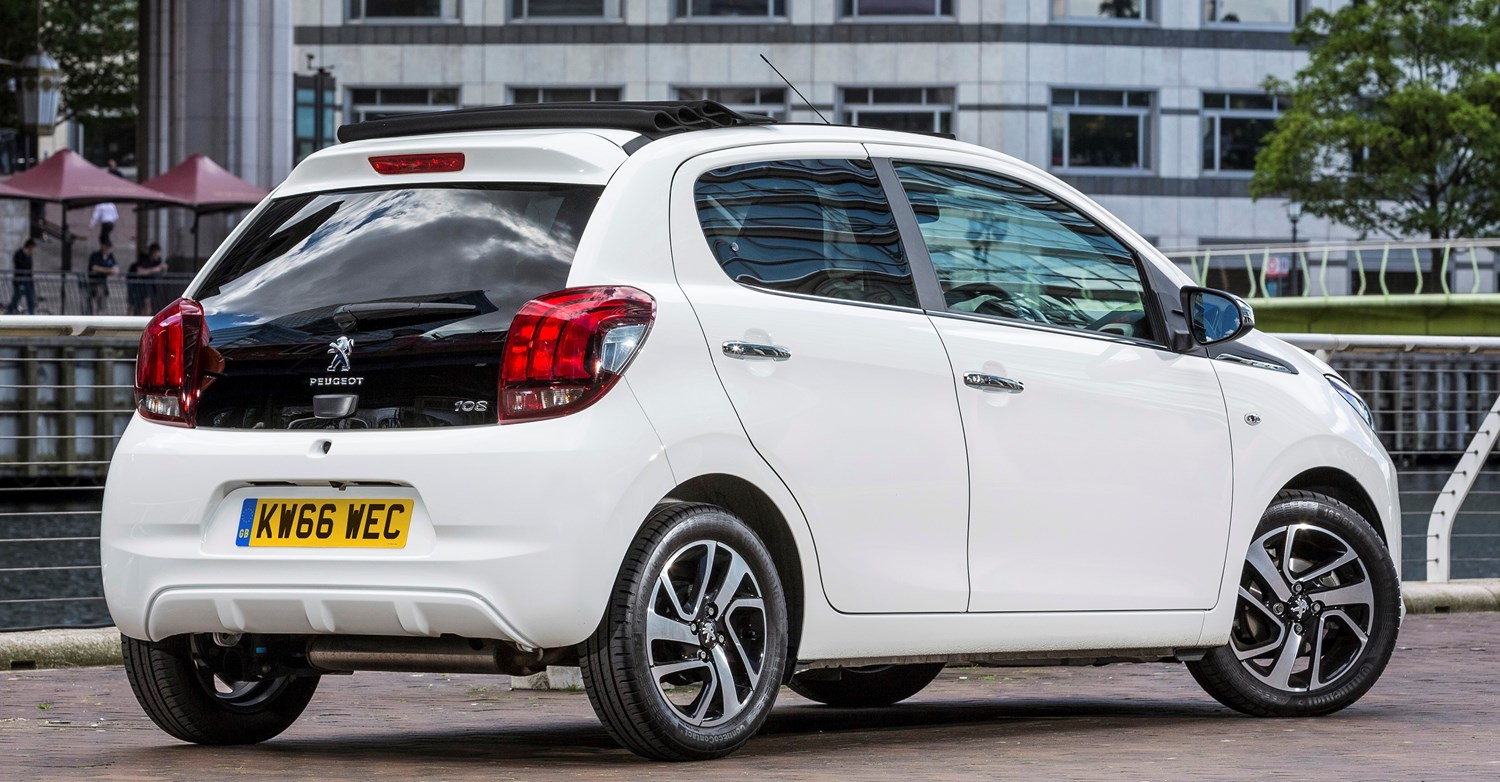Latest Model
With its micro dimensions, go-kart-like feel and compact packaging, the 108 is a worthy city car and can take on many of its competitors head-on.
All the petrol engines installed comply with the Euro 6 emission guidelines and have impressive efficiency figures, but it can feel underpowered with the lowest powered 67bhp model.
Peugeot has started modelling their cars to be more customisable and the 108 is the most extreme of the range, with plenty of options on offer to make the 108 your own.
It also comes with a surprising level of technology, which many city cars need to come with if they are to attract the majority of the model’s target market – young drivers.
Value for money
As you would expect from such a small and inexpensive car you won’t get all mod-cons from the base spec, but you still get plenty of accessories in the Access trim – which is only available in the three-door body style. With the Access model you get LED daytime running lights, radio with steering column mounted controls, electric front windows, AUX/USB connection ports, ESP, ABS, Isofix fixture points and folding rear bench.
Admittedly, you don’t get that much but for the £8,995 price tag, but you wouldn’t expect to get much more for that in this current market either.
If you look on the used market though, you will find a range of good quality models in top spec that come in under or at the same price as a new model. For example, you can get a 1.2-litre Allure Top five-door model for the same price as a new Access model.
With less than 4,950 miles on the clock, the model comes with LED daytime running lights, seven-inch infotainment touchscreen, Bluetooth mobile interface, 15-inch alloy wheels, front electric windows, tinted rear windows, power-assisted steering and Isofix points. It comes with much more than the base 108 and with the sliding material roof, you can take in the outside environment as well.
Looks and image
For a city car to attract people it needs to look funky and be very customisable, and with the 108 Peugeot has done just that. It is more interesting to look at than the VW Group trio of the Up, the Seat Mii and Skoda’s Citigo, and although it looks similar to its PSA Group partner, the Citroen C1, it is cool to look at and fits in with the modern city lifestyle.
The Top models and special edition Roland Garros versions are especially nice to look at and with multiple choices on colours, decals and interior colour trim, you can find a 108 to suit you.
The 108 does excel where it is supposed to – in the city – and with its small engine, lightweight framework and light steering, you can fling it in and around city streets with no problem at all. Despite the low power output, the engines are great for urban driving and can be really handy in town.
But if you take the 108 out on the motorway and open road, it starts to flounder due to the lack of power and you can really tell where this car is suited for. It struggles to get up to a high speed and is very loud in the process. It does have good levels of grip on the open road, but feedback is poorer than you would like and the steering also lacks feel. The gearbox and clutch combo is also poor as the gear change can feel much less than smooth.
With slightly firmer suspension to try and reduce body roll it knocks on into the overall ride and on some UK roads that can mean a bumpy and far from settled setup. Inside there is reasonable amounts of space despite the small exterior dimensions with plenty of head and legroom for people in the front, while the back seats can accommodate people in excess of six foot, although it will start to feel small during longer journeys.





